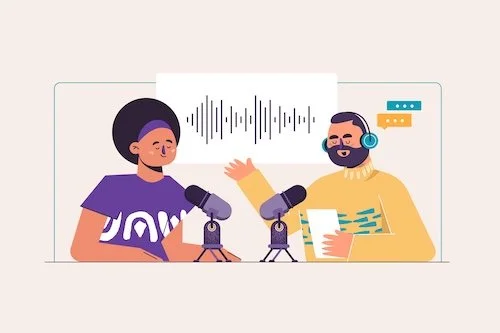Conversational session formats—panels, fireside chats, and debates—are an engaging way to dive deeper into a topic at an event and hear different perspectives. What does it take to put together a strong co-presentation? It comes down to a lot of preparation, thought, and balance.
Whether you’re putting together a panel, organizing a debate, or anything in between—it’s important to think about every aspect of what goes into having an engaging and impactful conversation on the day of the conference. Below are five steps to help you put together a strong co-presentation.
Know what your topic and specific focus is: Before diving into the speakers, you really need to think about what topic you want the session to focus on. Co-presentation topics should be specific, as broader topics can lead to muddled conversations. Take time to research your topic and find a newsworthy or unique angle to help keep the discussion as focused as possible.
Think about who can add value to the talk: Now that you have your topic ready, spend time thinking about who you want to talk about this. What kind of perspectives do you want on the panel or co-presentation? Who would be a strong moderator for this topic, to help frame the conversation? Create various descriptions of what kind of thought leaders you think could add to this discussion. From there, you can start thinking about who to invite to participate in the session.
Have a balanced speaker line-up: The best co-presentations are the ones where the audience gets to hear multiple perspectives on the same topic. Having a speaker with a contrarian view or different background will help keep the conversation interesting. That’s why it’s important to avoid having a co-presentation with speakers who are too similar, whether that’s in terms of job titles, race, gender, and other identities.
Start preparing the content in advance: Once you have your topic and speaker line-up ready, it’s time to dig deeper into content. We recommend starting a shared document several weeks before the session where the moderator can drop in their questions and initial ideas. The moderator or session organizer should share that doc with the other speakers so they can drop in their discussion points. Bonus: This doc will come in handy during a prep call!
Speakers should meet ahead of the session: Collaborative docs are a great way to prepare, but in order to truly feel ready for the day of their session, the co-presenters must meet in advance. Having a prep call will help speakers feel more prepared for the discussion, as everyone will get a chance to collaborate live and share more nuance on what they want to cover during the talk. Meeting ahead of time also helps break the ice between speakers and ensure they have more natural on-stage (or on-screen) chemistry during the conversation.
Have a panel idea that you want to see on stage? Connect with us!




